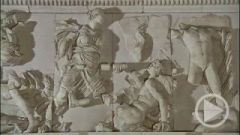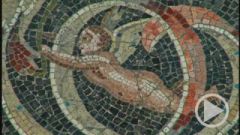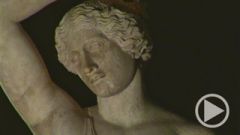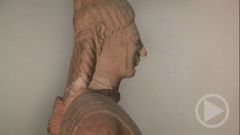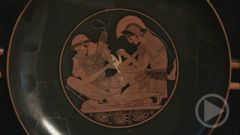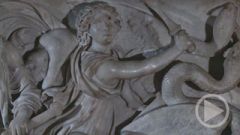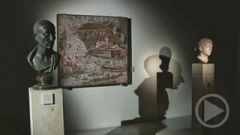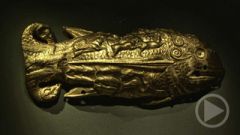- Home
- »
- Germany
- »
- Berlin
- »
- Museum Island
- »
- Pergamon Museum
- »
- The Collection of Classical Antiquities
- »
- The Pergamon Museum - The Praying Boy
The Praying Boy
The Praying Boy
In the Old Museum, visitors entering the rotunda are greeted by one of the best-known statues of antiquity. It is an artistic masterpiece, shrouded in mystery. Called the Praying Boy, it has quite a bit of road dust on it. It was found in about 1500 during construction of the city walls in Rhodes and brought to Venice. It later migrated to Verona, Mantua, the English court, Versailles and finally, Vienna. There it was bought by Frederick the Great. He had the sculpture installed on the terrace of Sans Souci palace in Potsdam so that he could always see it from his desk. Apart from a brief detour to Paris, the bronze figure has been in the Museum since 1830.
Although no less than 18 different owners of the piece have been verified, no-one knows who the figure is supposed to be. When it was found, the arms were missing. The finance minister to Louis the Fourteenth had them added. However, the position of the forearms and hands can be no more than a supposition, meaning any interpretation of the figure is open to debate. With his incomparable grace and naturalness, the soft flow to the form of his naked body, it has been posited that he is the young god Apollo, or Ganymede, reaching longingly for the eagle of Zeus. But the statue has also been interpreted as a portrait of Antinoüs, or as a ball player or athlete who is donning the victor's sash.
The current belief among experts is that the praying boy was originally part of a group of figures. Perhaps the figure was handing something up to a carriage driver. All we can say with any certainty is that this graceful figure was cast in Rhodes in about 300 B.C. by an artist from among the followers of the great master Lysippus.


